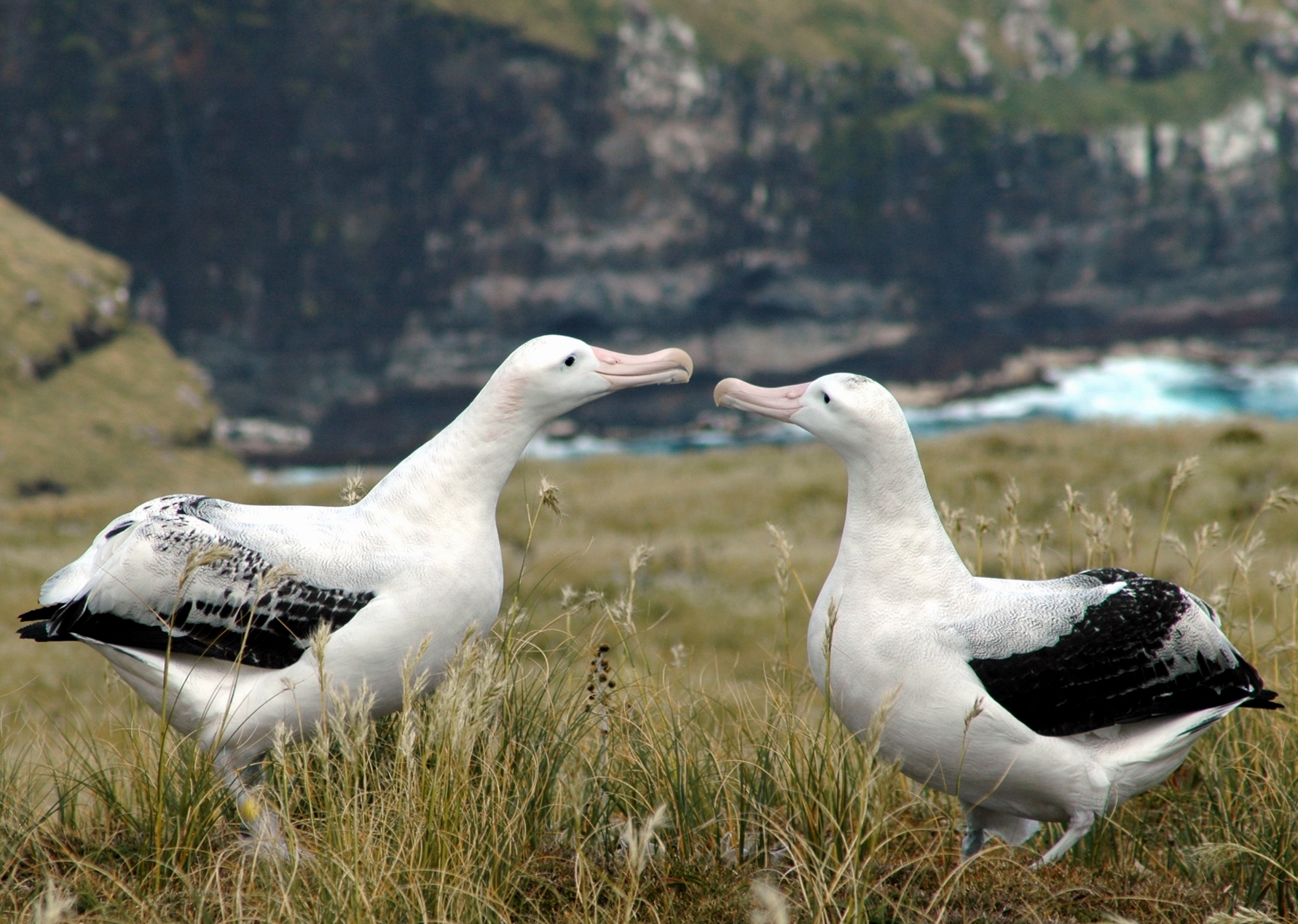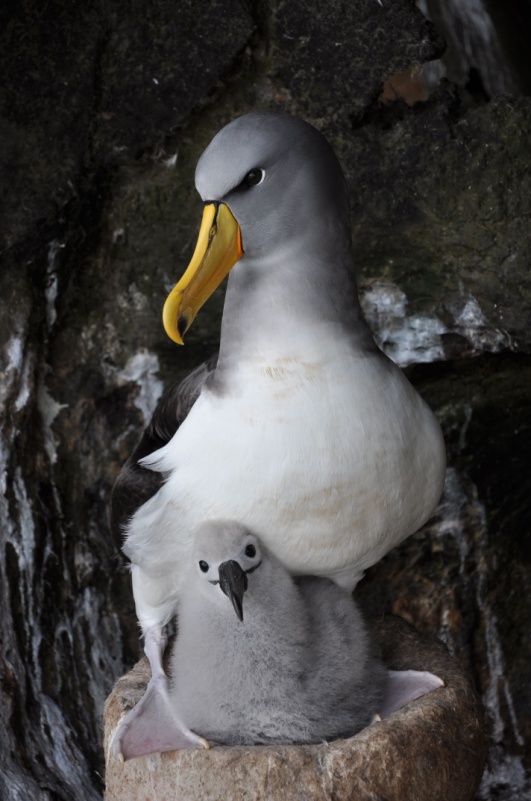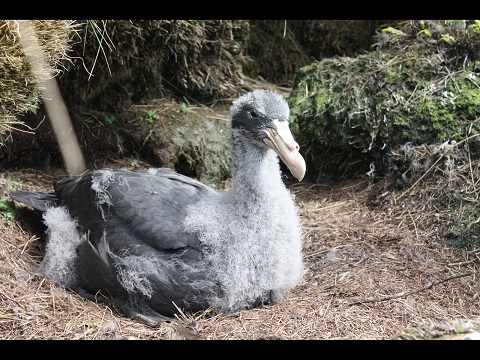 Antipodean Albatrosses on Antipodes Island, photograph by Kath Walker MNZM
Antipodean Albatrosses on Antipodes Island, photograph by Kath Walker MNZM
In 2022 the Ornithological Society of New Zealand produced the Fifth Edition of its Checklist of the Birds of New Zealand. The 335-page occasional publication (digital only) gives information on nomenclature, taxonomy, classification, distribution, breeding localities and status of the birds (including vagrants) of New Zealand, its sub-Antarctic islands and its surrounding waters. Common names are given in English and in Māori. A total of 427 living or recently extinct species is covered by the checklist.
New Zealand is known for the large number of seabird species that has been recorded within its region, notably among the procellariiforms (albatrosses, petrels and shearwaters), including 25 species of the 31 listed by the Albatross and Petrel Agreement. Of the 22 species of albatrosses recognized by ACAP, 18 species have been recorded within the New Zealand region, 13 of them as breeders. Seven of the nine ACAP-listed petrels and shearwaters are in the checklist, five of them as breeders. The information provided in the 5th Edition of the checklist will thus prove valuable, for example, in updating many of the ACAP Species Assessments.
 A Chatham Albatross straddles its chick on a pedestal mud nest on the Pyramid, photograph by Lorna Deppe
A Chatham Albatross straddles its chick on a pedestal mud nest on the Pyramid, photograph by Lorna Deppe
The checklist’s taxonomic treatment is broadly similar to that of ACAP’s. For example, for the great albatrosses Diomedea that it groups in a “wandering albatross” complex, it recognizes five taxa in four species: Amsterdam D. amsterdamensis, Antipodean D antipodensis (including the subspecies gibsoni), Tristan D. dabbenena and Wandering D. exulans. Similarly, it recognizes two subspecies for Buller’s Albatross Thalassarche bulleri. There are a few differences, notably Shy Thalassarche cauta and White-capped T. steadi Albatrosses are treated subspecifically, and not as full species as ACAP does.
English common names are also broadly similar, but there are some differences, e.g. Campbell Black-browed Albatross T. impavida and Chatham Island Albatross T. eremita, rather than the shorter Campbell and Chatham Albatrosses favoured by ACAP. The now somewhat old-fashioned Light-mantled Sooty Albatross is retained for Phoebetria palpebrata, whereas most modern treatments have dropped the “Sooty”, as has ACAP. No mention of the “Snowy Albatross” used by those who watch seabirds on pelagic excursions, to refer (it seems) to large, mainly white albatrosses they find hard to identify to species.
 A Northern Giant Petrel chick on Disappointment Island, Auckland Islands, photograph by Graham Parker
A Northern Giant Petrel chick on Disappointment Island, Auckland Islands, photograph by Graham Parker
Five ACAP-listed petrels in the genera Macronectes and Procellaria breed within New Zealand, their taxonomy and common names follow those used by ACAP.
Reference:
Checklist Committee (OSNZ). 2022. Checklist of the Birds of New Zealand (5th Edition). Ornithological Society of New Zealand Occasional Publication No. 1. Wellington: Ornithological Society of New Zealand. 335 pp.
John Cooper, Emeritus Information Officer, Agreement on the Conservation of Albatrosses and Petrels, 29 February 2024

 English
English  Français
Français  Español
Español